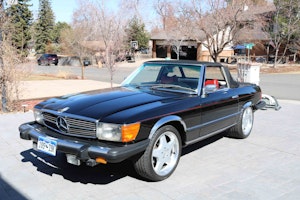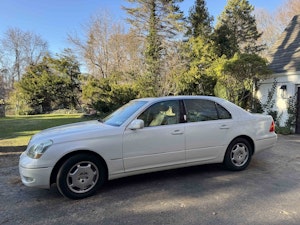Media | Articles
Will stick shifts become extinct? Not on our watch
One of the things I’m proudest of at Hagerty is a program we offer to teach teens and young adults how to drive cars with manual transmissions. We call it the Hagerty Driving Academy, Powered by Skip Barber Racing School. It also teaches more advanced skills—things like skid control and emergency lane changing. But those young faces behind the wheel light up the most when they finally figure out the mysteries of the clutch and gearshift.
It’s easy to see why. When you’re starting out, driving a car with an automatic is daunting enough. All those knobs, pedals, and levers you’re used to seeing someone else operate so effortlessly are now under your control. That’s intimidating stuff.
But a stick? That’s a whole new ball game. I’ve taught manual transmissions to dozens of young people, including my daughters. Every person at some point got that frozen look of “Oh, my god, what did I do?” when they ground the gears or released the clutch too soon. (“Thunk!”)
Most probably thought, “I can’t do this.” But, of course, they can. And when they do finally “get it,” wow, it’s a real accomplishment. They’re now members of the club. They get why driving is more fun when you’re in charge of one of the car’s most basic processes. This leads to an appreciation of twisty back roads and an understanding of why some of their friends love cars that go really, really fast.
That wonderful feeling of mechanical mastery is one of the reasons we continue to teach driving a stick, even though there’s no practical reason to do so. Automatic transmissions these days are easier, shift faster, and are more fuel efficient than manuals. Only about 20 percent of new cars even offer them, which is roughly the same percentage of Americans (18 percent) who can operate them anymore.
Marketplace
Buy and sell classics with confidence
On its face, that might seem like a bit of a downer for those of us who love manuals and cool old cars. Are we in the last days of the stick shift? Is driving a stick soon to go the way of the dinosaur?
I don’t think so at all. More than a century ago, the Model T didn’t kill our interest in horses. It just changed it. Horses today are a massive industry in America (anywhere from $50 billion to $120 billion depending on how you look at it). Why? Because they’re fun and useful in the right situations.
Just like manual transmissions.
The truth is, if the stick shift dies, it will be because we let it, and the car people I know aren’t about to let that happen. How do I know? Simple. Anyone who is into old cars loves to share his or her passion, and if that’s you, I hope you’ll take the time to teach a young driver or two the ways of the stick. You’ll make their lives richer and in doing so help preserve a fundamental driving skill they no doubt will pass on to others someday. That’s how we preserve car culture for the next generation and beyond—one teenager and one ground gear at a time.
Which reminds me of a funny story. This summer, one of the teens in the Hagerty Driving Academy who had just finished a stick-shift lesson turned to his instructor and said, “Wow, that was cool! Knowing how to use the clutch pedal is really going to help me in Forza!”
Forza is a popular racing video game. Progress comes in many forms, I guess. Onward and upward.
The article first appeared in Hagerty Drivers Club magazine. Click here to subscribe to our magazine and join the club.










